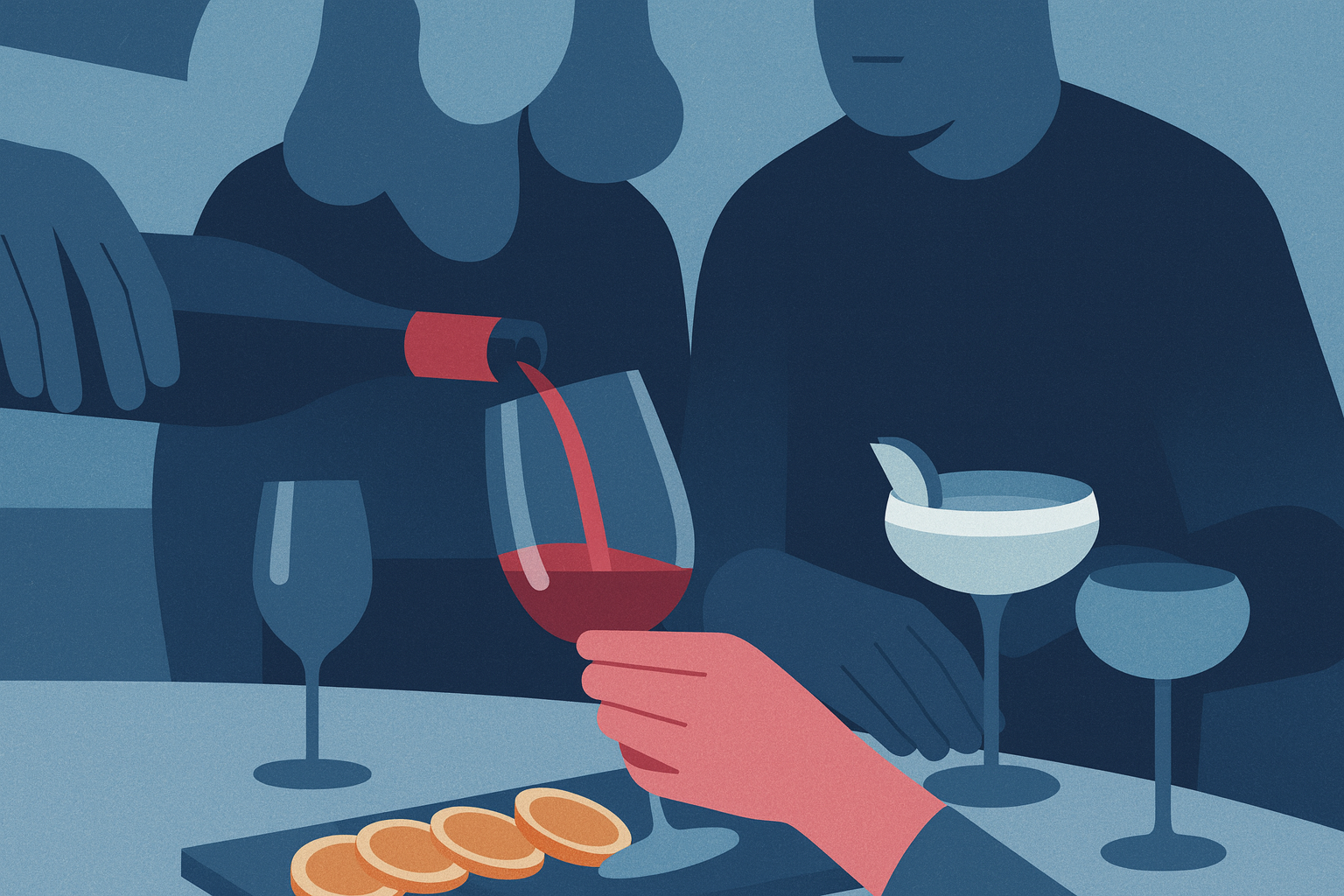Hey there, wine lovers! Choosing the best wine glass isn’t just about looking fancy—it’s about enhancing the entire wine experience. Whether you’re a casual sipper or a serious wine enthusiast, the right glass can transform how you taste and enjoy your wine. Our Buyers Guide will help you find the best wine glasses for your needs.
Table of Contents (It’s a long read!)
- Best Wine Glasses in 2025
- Understanding Wine Glass Basics: Shape Matters
- Materials Matter
- Wine Glass Etiquette and Pro Tips
- Best Wine Glasses – In Conclusion
Best Wine Glasses in 2025
Best Overall: Riedel Veritas Wine Glass Set
When I first stumbled across the Riedel Veritas collection, I was skeptical. Who spends hundreds of dollars on wine glasses? Apparently, me – and I’m not even a little bit sorry. These aren’t just glasses; they’re like precision instruments designed specifically for unleashing a wine’s full potential.

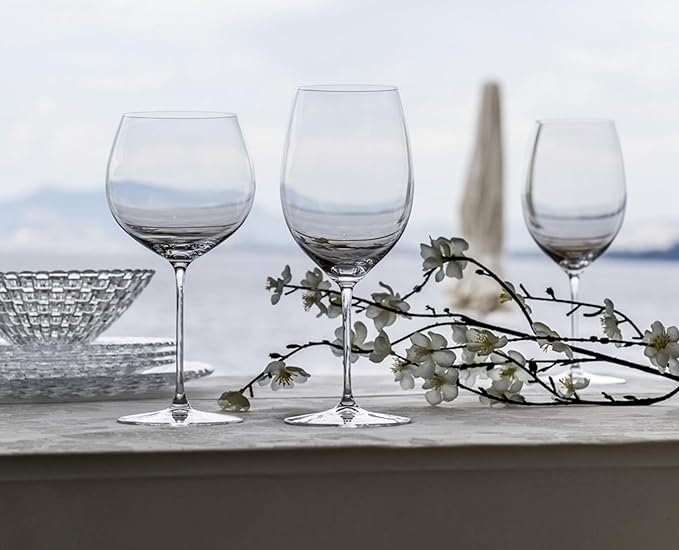
Who are these glasses perfect for? Serious wine enthusiasts who want to elevate their drinking experience. People who host dinner parties and want to impress their friends. Folks who appreciate craftsmanship and understand that the right glass can literally transform how a wine tastes and smells.
But let’s be real – these glasses aren’t for everyone. If you’re clumsy, budget-conscious, or tend to break things, stay far away. These are delicate, hand-blown crystal glasses that require a gentle touch and some serious care. One wrong move, and you’re looking at an expensive accident.
- The unadorned machine-made Cabernet and merlot glass of the light-weight glass collection Riedel Veritas distinguishes l…
- This glass showcases the majestically structured red wines in all their complexity and finesse.
- Riedel Veritas combines the charm of a handmade glass with the consistent accuracy only A machine made glass can achieve…

The pros? Incredible design, noticeable wine enhancement, and they’re conversation starters. The cons? They’re expensive, require careful handling, and might make you insufferably pretentious at dinner parties. Ask me if I care? Nope.
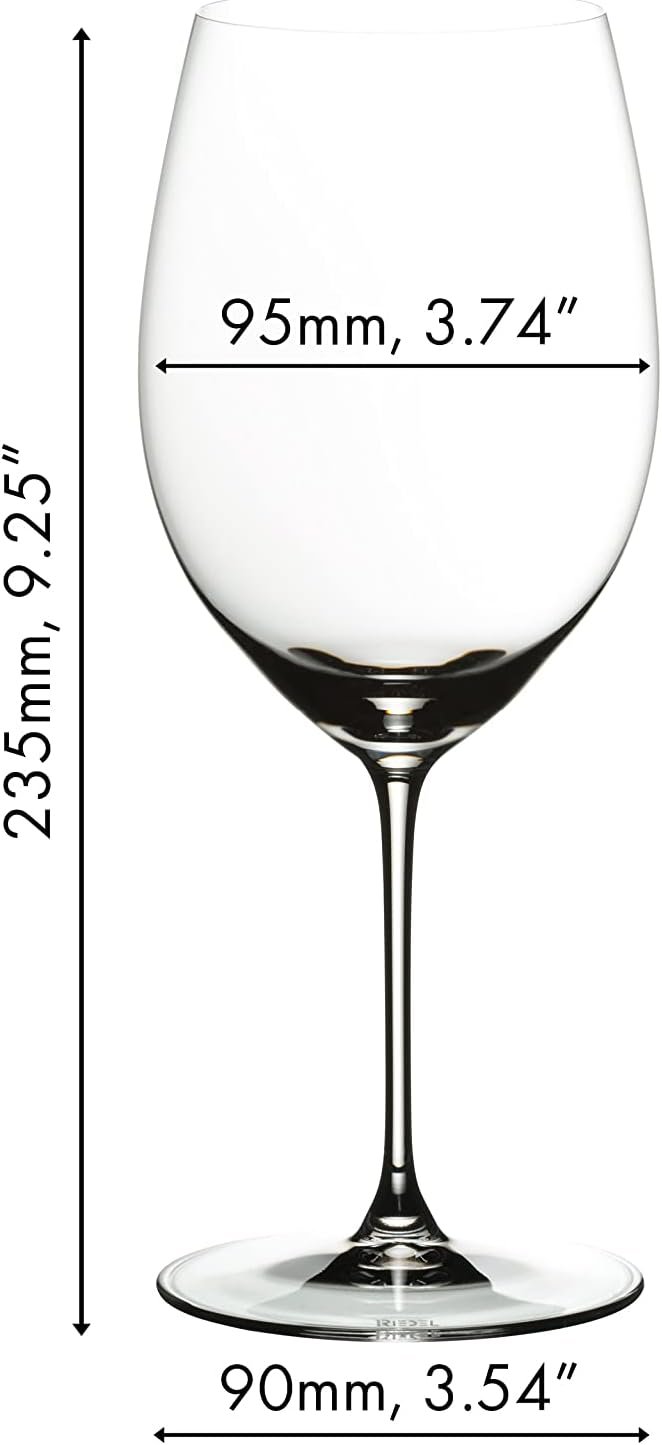

Technically speaking, these are hand-blown, lead-free crystal glasses. They’re dishwasher safe (thank goodness), but I still hand dry mine because I’m slightly paranoid. Each glass is lightweight, perfectly balanced, and feels like a work of art in your hand.
Best Budget Option: The Libbey Signature Kentfield Estate Wine Glass Set
The Libbey Signature Kentfield Estate Wine Glass Set is a solid, well-designed collection that punches well above its weight class in the budget wine glass market. These glasses feature a classic, versatile design with a 16-ounce capacity that works perfectly for both red and white wines.
The glasses are crafted from clear, durable glass with a slightly curved bowl that allows wines to breathe and maintain their intended aroma. Users consistently praise the glasses for their sturdy construction, with many noting they can withstand regular use and dishwasher cycles without chipping or losing their clarity.
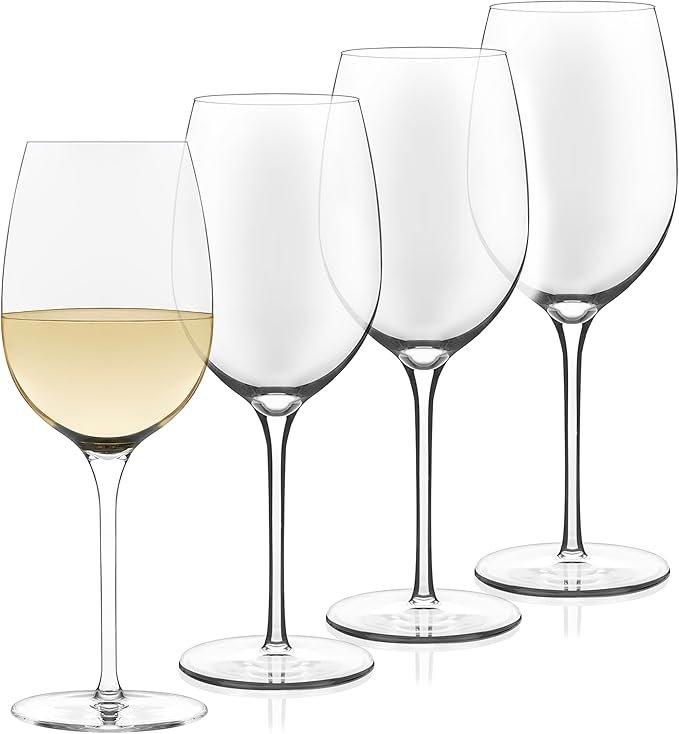
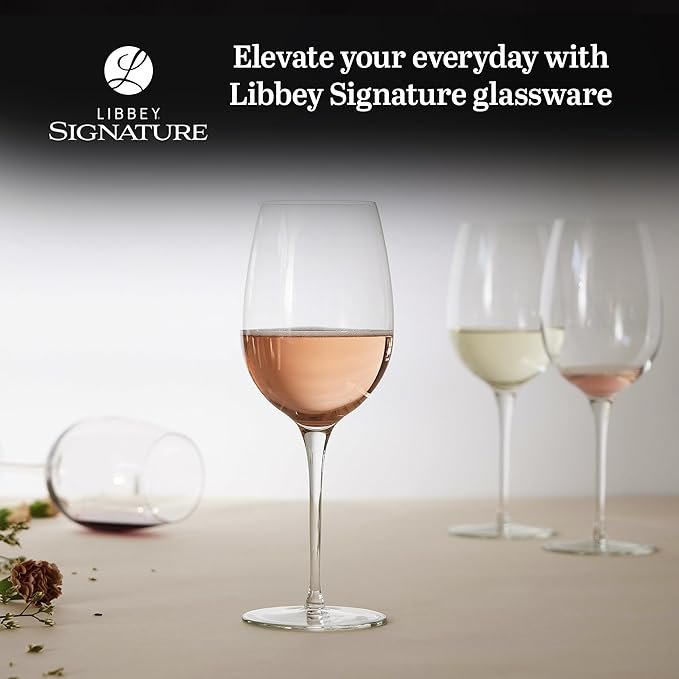
The glasses come in a set of four, with a traditional stem design that offers a comfortable grip and elegant appearance. Amazon reviewers frequently highlight the glasses’ remarkable clarity and how they maintain a pristine look even after multiple wash cycles.
The thin-yet-sturdy rim is another feature users love, mentioning it doesn’t distract from the wine-drinking experience. Many customers appreciate the versatility – these glasses work equally well for a casual weeknight wine or a more formal dinner party.
The balanced weight and comfortable stem design make them feel more expensive than their budget price point suggests, with multiple reviews comparing them favorably to glasses that cost twice as much.
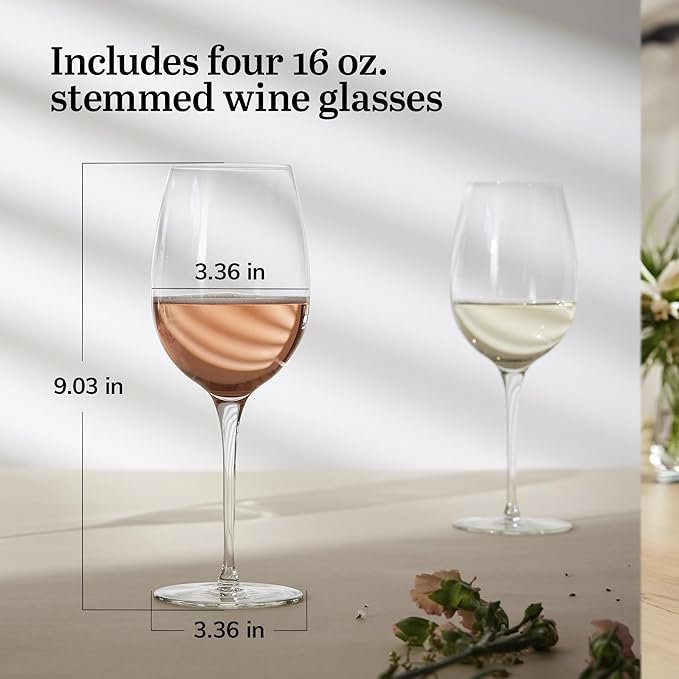
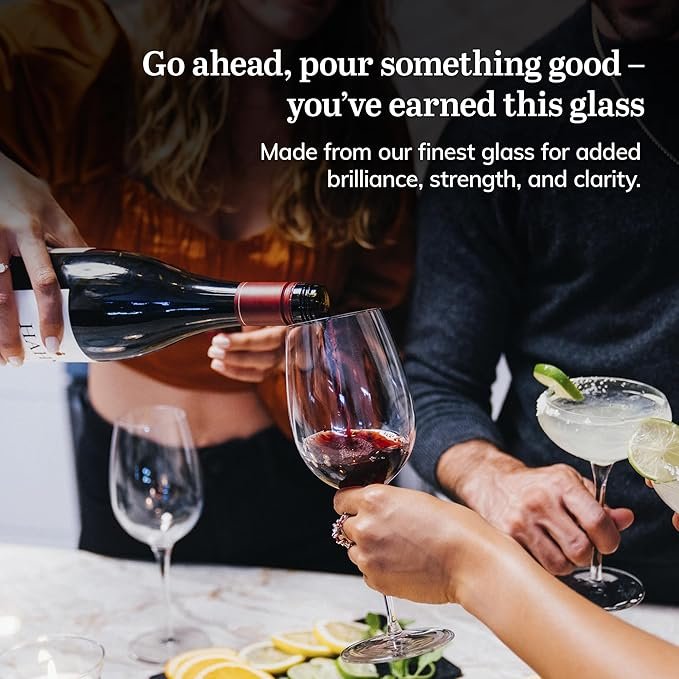
But here’s the real scoop from digging through Amazon reviews. Users love these glasses for their durability and classic look, but they’re not without quirks.
The pros? Affordable, dishwasher safe, and surprisingly well-balanced for the price point. The cons? They’re not as delicate as high-end crystal, and some reviewers mention they can feel a bit thick compared to more expensive options.
- Libbey wine glasses Set of 4: Our Libbey Signature series stem wine glasses set of 4 are precisely created to display th…
- Versatile Wine Elevation: Our unique wine glasses are designed to accentuate various wine varietals, from robust reds li…
- Elegant Design: Crafted from high-quality ClearFire glass, the elegant shape wine glasses with stem features a classical…

But let’s be real – for most of us just looking to enjoy a good glass of wine without stressing about breaking a $50 piece of glassware, the Libbey Signature Kentfield Estate set is basically a wine-drinking lifesaver.
Best Luxury Pick: Zalto Universal Wine Glass
The Zalto Universal Wine Glass isn’t just a wine glass – it’s basically the Ferrari of the wine world. Handblown in Austria, these glasses are so delicate they look like they might shatter if you breathe too hard, yet they’re surprisingly resilient.
Each glass is crafted with an almost impossibly thin crystal that’s designed to essentially disappear when you’re drinking, letting the wine be the true star of the show. The unique design, with its dramatically angled bowl, isn’t just for looks – it’s scientifically engineered to enhance the aromatics and flavor profile of virtually any wine, from a crisp Sauvignon Blanc to a robust Cabernet Sauvignon.
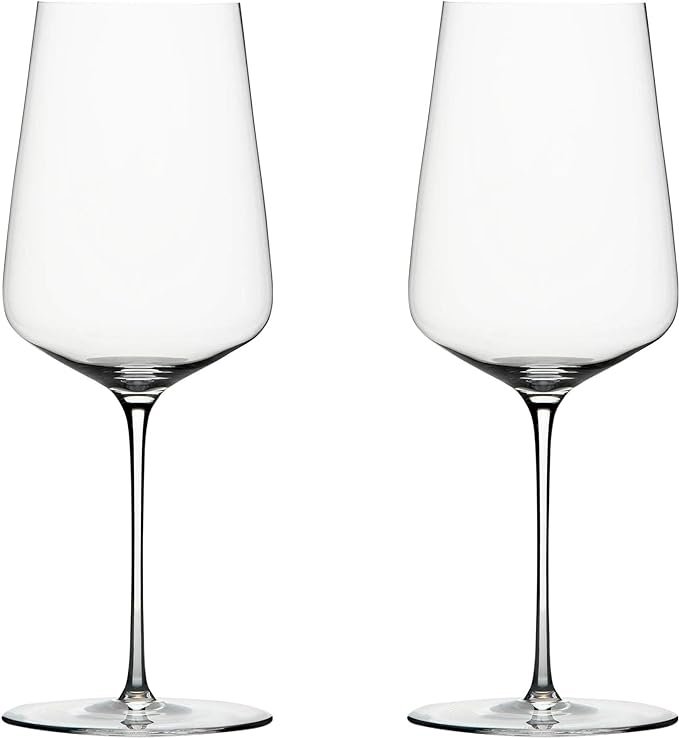
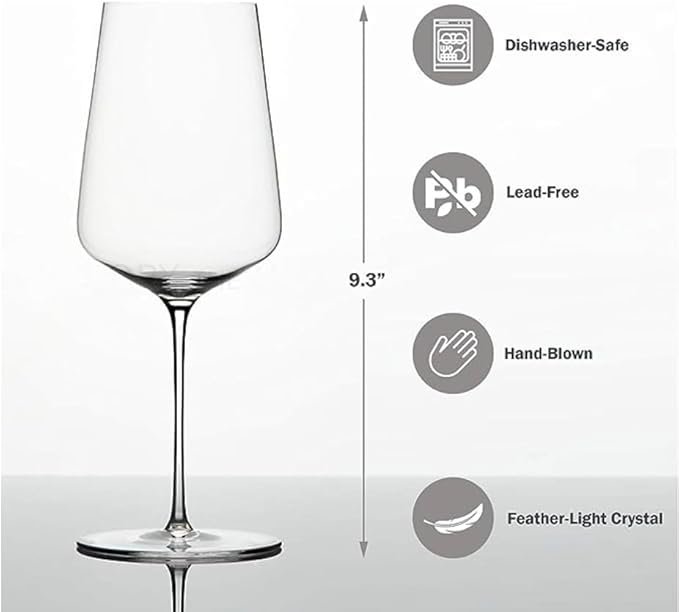
The glasses come individually, which tells you something about their luxury status right off the bat. Zalto’s universal design means one glass works for multiple wine types, a feature that wine enthusiasts absolutely geek out over. Amazon reviewers consistently rave about the glasses’ incredible engineering, with many describing how the glass seems to literally transform their wine-drinking experience.
Multiple users mention that these glasses make even a $15 bottle of wine taste like it cost $50, highlighting the remarkable way the glass shape and ultra-thin crystal interact with the wine’s chemistry. Professional sommeliers and serious wine collectors frequently comment that these glasses are the closest thing to a professional tasting experience you can get at home.
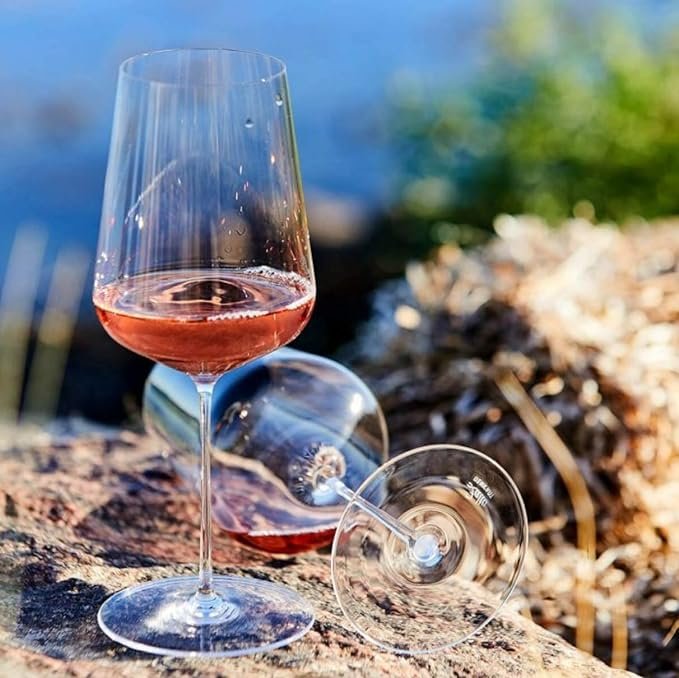
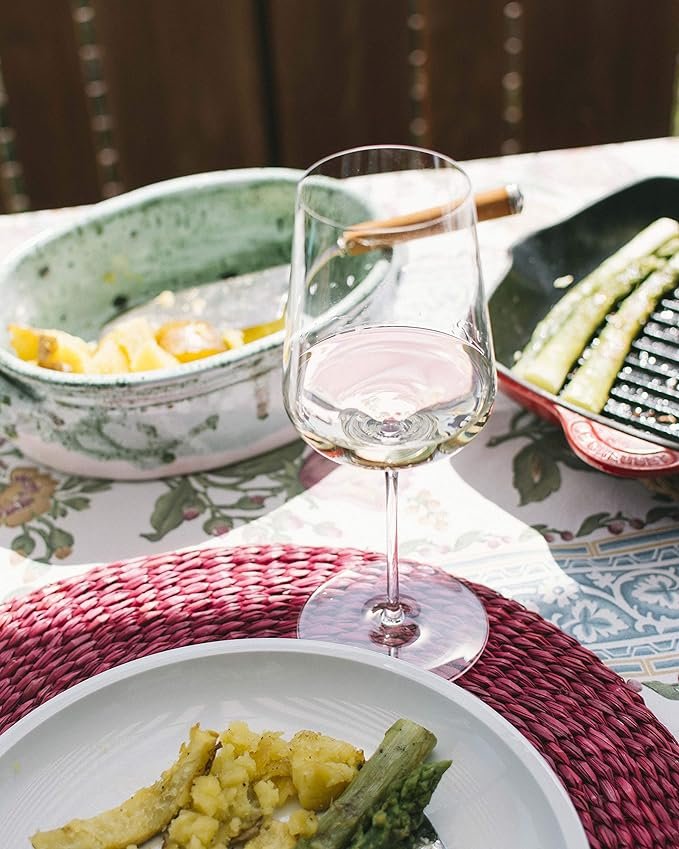
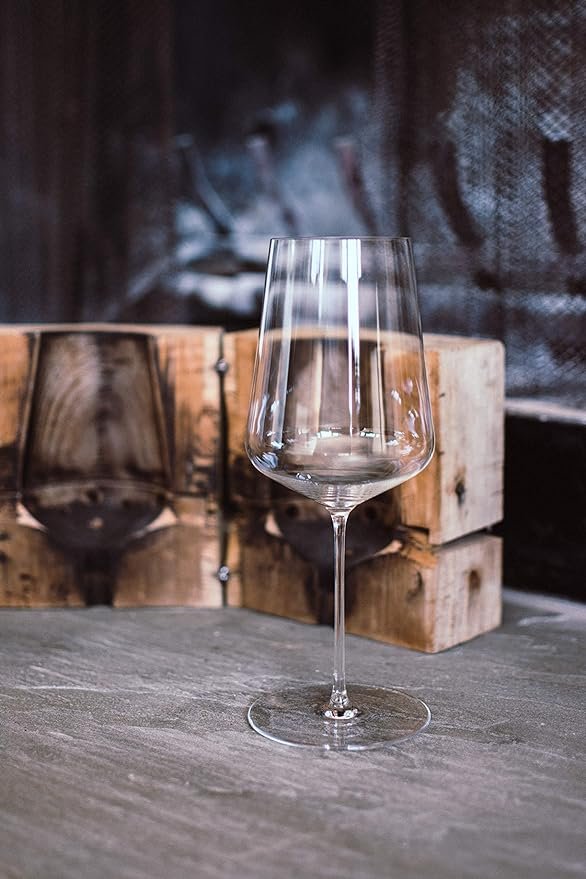
But here’s the real talk about Zalto glasses. They’re not for the faint of heart or light of wallet. Users love their incredible design and wine-enhancing properties, but they’re crazy fragile and expensive.
The pros? Unmatched wine presentation, incredible flavor enhancement, and they’re basically a conversation piece at any dinner party. The cons? They’re stupidly expensive, require near-surgical handling, and one clumsy moment could mean goodbye to a $70+ piece of glassware.
- ALL PURPOSE WINE GLASS – This universal long stem wine glass offers a single, seamless piece from the highest quality Eu…
- PERFECT DIMENSIONS: The height of the glass is 9.3 inches and it is 3.6 inches at its widest part. The volume capacity i…
- EXQUISITE DESIGN: The shape of the bowl was meticulously designed to bring out the best expressions of every type of gra…
Most users recommend hand-washing these delicate beauties and treating them like the precious instruments they are. But for true wine lovers who want to elevate their drinking experience, Zalto Universal glasses are basically the holy grail of wine glassware.
Best Stemless: Govino Shatterproof Wine Glasses
I stumbled into the world of Govino Shatterproof Wine Glasses during a camping trip that was one part disaster, one part divine intervention. Picture this: me, trying to enjoy a nice bottle of Pinot Noir in the middle of the wilderness, surrounded by jagged rocks, clumsy friends, and the constant threat of broken glassware. Enter the Govino – the superhero of wine glasses for people who live life on the edge.
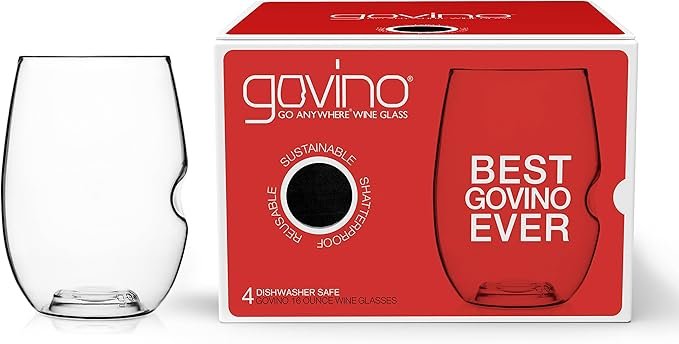

These glasses are basically the cockroaches of the wine glass world – nearly indestructible and surprisingly sophisticated. Made from a proprietary polymer material, Govinos are designed to be lightweight, flexible, and basically immune to the kinds of accidents that would turn traditional crystal glasses into expensive dust.
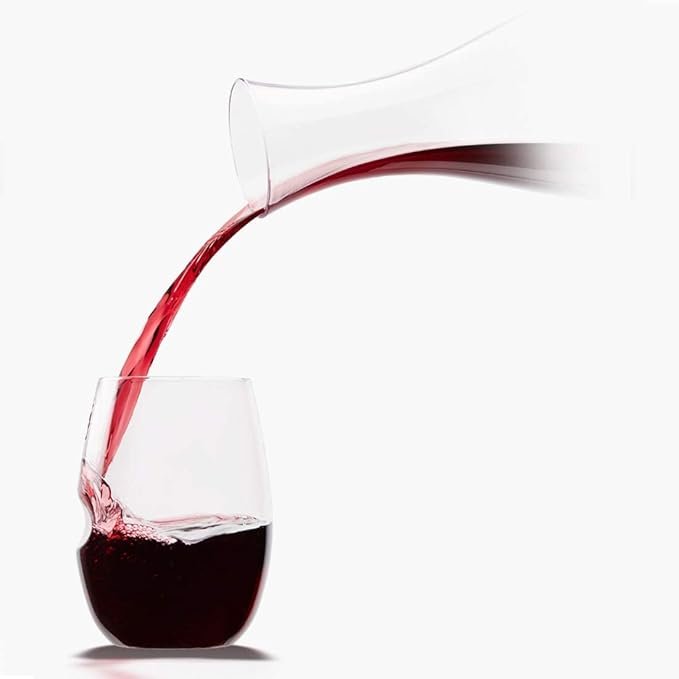
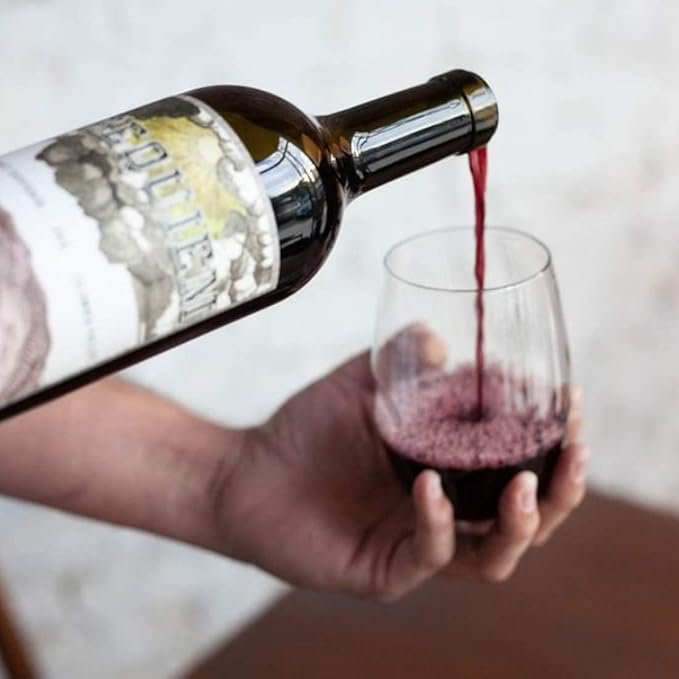
They’re BPA-free, which means you’re not compromising your health for convenience. Amazon reviewers go crazy for these glasses, with many outdoor enthusiasts and poolside wine lovers praising their durability. The glasses have a surprisingly elegant curve that mimics traditional wine glass shapes, which means you’re not sacrificing aesthetics for practicality. They’re clear enough to appreciate a wine’s color, lightweight enough to not feel like you’re drinking from a plastic cup, and flexible enough to survive drops that would shatter traditional glasses.
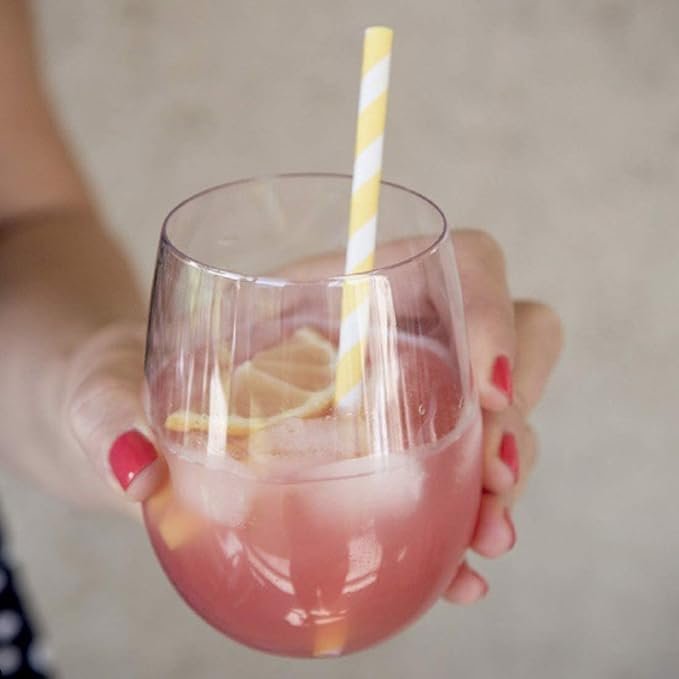
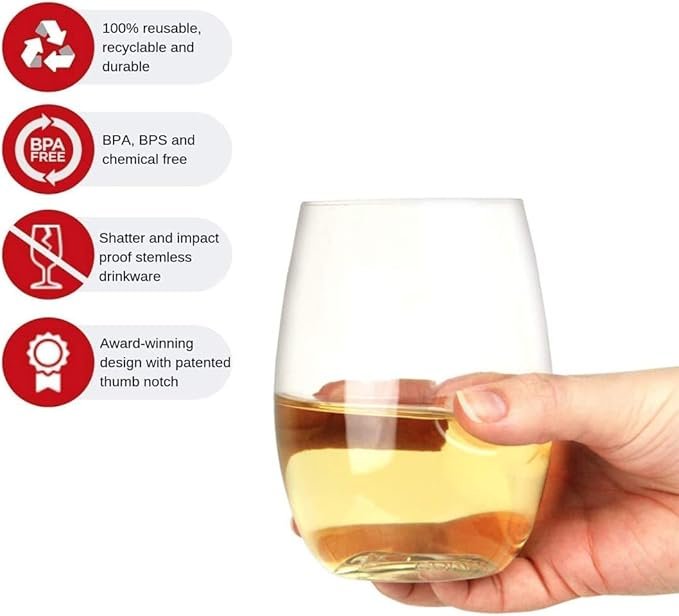
But here’s the real scoop about Govino glasses. They’re not trying to replace your fancy crystal collection – they’re solving a specific problem for people who want to enjoy wine in environments where traditional glasses are a terrible idea. Pool parties, boats, camping trips, picnics – these are the natural habitats of the Govino. Users consistently mention how they’ve saved expensive wines from certain destruction, prevented dangerous glass-related accidents, and still managed to look pretty damn classy doing it.
- 16 OZ CAPACITY – Holds cold and room temperature of whatever keeps the vibes right – red wine, cocktails, pasta salad, o…
- THE ORIGINAL SHATTERPROOF WINE GLASS – That means it’s drop-proof, kid-proof, pool-proof, and ready for those extra-enth…
- TRADEMARK THUMB NOTCH – Designed for beauty and for ultimate comfort, it feels so good that you’ll never want to put it …

The pros? Unbreakable, lightweight, dishwasher safe, and surprisingly affordable. The cons? They’re not as elegant as crystal, and serious wine collectors might turn up their nose. But for the rest of us who want to enjoy a good glass of wine without constantly worrying about potential disaster, Govino glasses are basically a wine-drinking miracle.
Understanding Wine Glass Basics: Shape Matters
Wine glasses are way more than just pretty containers for your favorite adult grape juice – they’re actually precision instruments that can make or break your entire drinking experience. I learned this the hard way after years of drinking wine from whatever random glass was clean in my kitchen cabinet. Turns out, the shape of a wine glass isn’t some fancy sommelier nonsense – it’s legit science that dramatically impacts how a wine tastes, smells, and feels.
- ALL PURPOSE WINE GLASS – This universal long stem wine glass offers a single, seamless piece from the highest quality Eu…
- PERFECT DIMENSIONS: The height of the glass is 9.3 inches and it is 3.6 inches at its widest part. The volume capacity i…
- EXQUISITE DESIGN: The shape of the bowl was meticulously designed to bring out the best expressions of every type of gra…
Let’s break down why shape is such a big deal. Different wine types interact with oxygen differently, and the glass shape controls how much air touches the wine’s surface. A red wine glass typically has a wider, more rounded bowl that allows the wine to breathe and releases those complex aromas. Bordeaux glasses, for instance, are tall with a smaller opening to concentrate the wine’s rich, bold characteristics.
White wine glasses are usually narrower and more upright, which helps maintain the cooler temperature and preserve the more delicate, crisp flavors. It’s like each glass is basically a custom-designed delivery system for your wine’s personality.
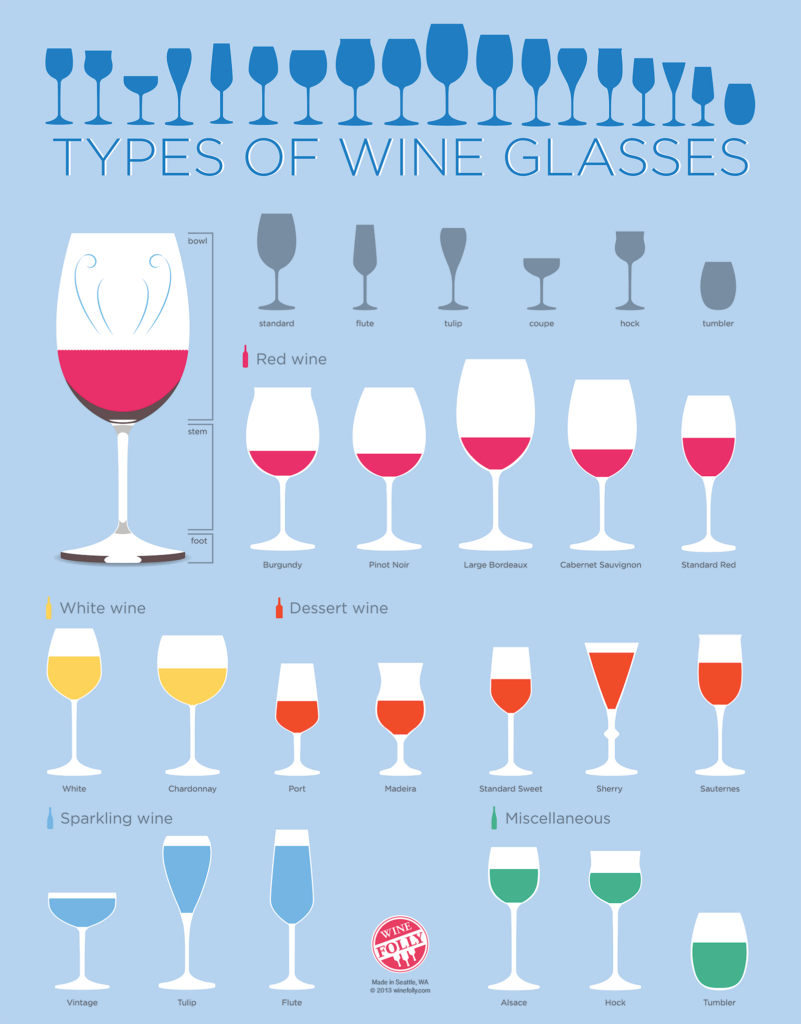
The magic happens in the glass’s design elements – the bowl’s width, the stem’s length, and even the rim’s thickness can transform your wine experience.
A proper Burgundy glass, with its wide, fish-bowl-like shape, is engineered to capture the nuanced aromas of more delicate, lighter red wines like Pinot Noir. The extra surface area allows the wine to oxidize just enough to release those subtle flavor compounds. (Champagne flutes, with their tall, narrow design, aren’t just about looking fancy – they help maintain the bubbles and direct the wine to specific taste areas of your tongue.)
- The unadorned machine-made Cabernet and merlot glass of the light-weight glass collection Riedel Veritas distinguishes l…
- This glass showcases the majestically structured red wines in all their complexity and finesse.
- Riedel Veritas combines the charm of a handmade glass with the consistent accuracy only A machine made glass can achieve…

Who knew geometry could be so delicious? Professional sommeliers obsess over these details, and now you can too. Just don’t go full wine snob at your next dinner party – nobody likes that guy.
Materials Matter
Wine glasses are like the unsung heroes of your drinking experience, and the material they’re made from is way more important than most people realize. I discovered this after a disastrous dinner party where I served a $50 bottle of Cabernet in some cheap, thick-rimmed glasses that basically murdered the wine’s delicate flavor profile. It was like serving a gourmet meal on a paper plate – total wine crime.
- Libbey wine glasses Set of 4: Our Libbey Signature series stem wine glasses set of 4 are precisely created to display th…
- Versatile Wine Elevation: Our unique wine glasses are designed to accentuate various wine varietals, from robust reds li…
- Elegant Design: Crafted from high-quality ClearFire glass, the elegant shape wine glasses with stem features a classical…

Glass, crystal, and other materials each bring their own game to the wine-drinking experience. Standard glass is your workhorse – affordable, relatively durable, and good enough for casual drinking. But crystal? That’s where things get interesting. True crystal glasses are hand-blown, typically lead-free these days, and have this magical way of making wine taste like it’s singing. The material is thinner, more delicate, and actually interacts differently with wine’s molecular structure.
Some wine enthusiasts swear you can taste a difference between a glass and crystal glass, and after my own experiments, I’m inclined to believe them. Soda-lime glass, which is your standard material, is cheaper and more machine-made, while borosilicate and crystalline glasses offer higher quality and better temperature retention.
But here’s the real tea about wine glass materials – it’s not just about looking fancy. Different materials impact temperature, breathability, and even the wine’s perceived flavor. Thinner glasses allow for better temperature control and can make wines taste smoother. Crystal reflects light differently, creating a visual experience that enhances the wine’s presentation.
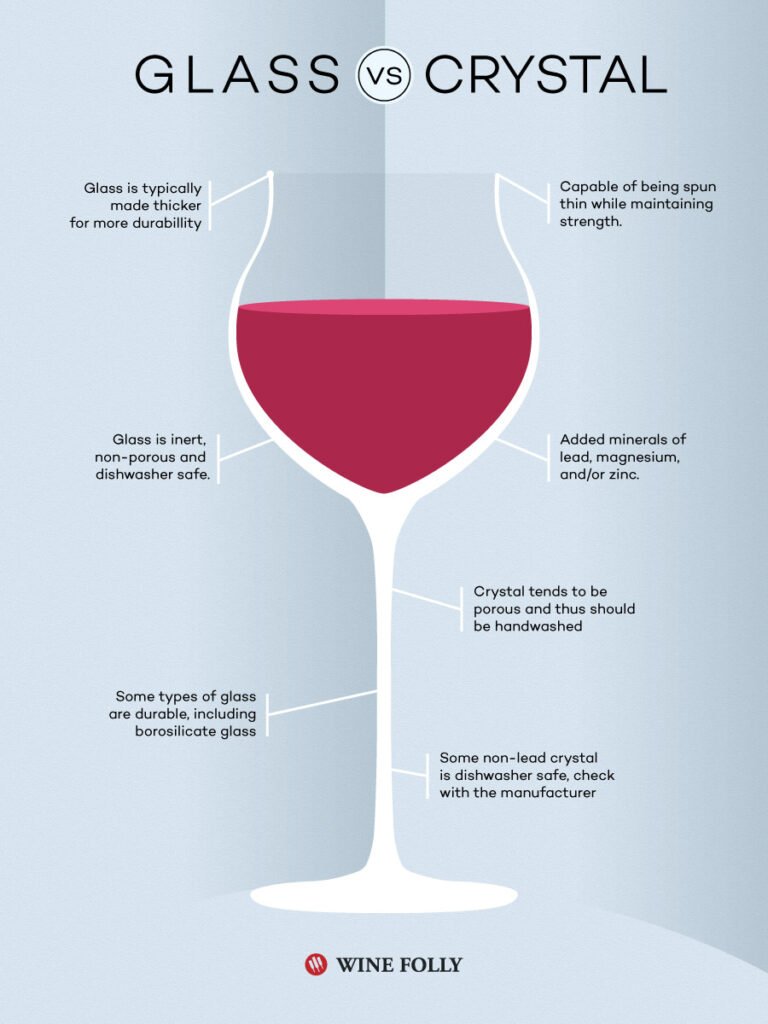
Some modern materials like tempered glass offer durability without sacrificing too much elegance. Unbreakable options made from polymer or reinforced glass are gaining popularity for outdoor events and people who are, let’s be honest, a little clumsy with their glassware. Just remember, the goal isn’t to have the most expensive glass – it’s about finding the right balance between performance, durability, and your personal wine-drinking style.
- ALL PURPOSE WINE GLASS – This universal long stem wine glass offers a single, seamless piece from the highest quality Eu…
- PERFECT DIMENSIONS: The height of the glass is 9.3 inches and it is 3.6 inches at its widest part. The volume capacity i…
- EXQUISITE DESIGN: The shape of the bowl was meticulously designed to bring out the best expressions of every type of gra…
Wine Glass Etiquette and Pro Tips
Holding a wine glass might seem simple, but true wine lovers know it’s an art form. Always hold your wine glass by the stem – and I mean always. Your hands generate heat, and gripping the bowl can instantly warm your wine and mess with its entire flavor profile. It’s like wearing mittens in a professional basketball game – you’re just doing it wrong. White and sparkling wines especially need to maintain their cool temperature, so keeping your hands off the bowl is critical.
- The unadorned machine-made Cabernet and merlot glass of the light-weight glass collection Riedel Veritas distinguishes l…
- This glass showcases the majestically structured red wines in all their complexity and finesse.
- Riedel Veritas combines the charm of a handmade glass with the consistent accuracy only A machine made glass can achieve…

Pouring and serving have their own set of unwritten rules that can make or break your wine game. Fill wine glasses only about one-third full – this gives the wine room to breathe and allows you to swirl without creating a potential red wine tsunami on your white tablecloth. Swirling isn’t just for show; it helps release the wine’s aromatics and gives you a chance to appreciate its complexity.
Washing your glasses is another minefield – hand washing is preferred, but if you’re using a dishwasher, avoid harsh detergents and make sure they’re not touching other dishes that might scratch their delicate surfaces.
Best Wine Glasses – In Conclusion
Choosing the right wine glass is about more than looks. The right shape, balance, and craftsmanship can elevate even an everyday bottle into something memorable. Across all the options we reviewed, each had merits for casual sipping, entertaining, or everyday use, but one collection stood apart from the rest.
The Riedel Veritas Cabernet/Merlot glasses proved to be the best overall choice. They combine remarkable design, precise engineering, and a light, elegant feel that transforms the drinking experience. Yes, they are an investment, but for wine enthusiasts who want to taste every nuance in the glass, the Veritas collection is unmatched.
- The unadorned machine-made Cabernet and merlot glass of the light-weight glass collection Riedel Veritas distinguishes l…
- This glass showcases the majestically structured red wines in all their complexity and finesse.
- Riedel Veritas combines the charm of a handmade glass with the consistent accuracy only A machine made glass can achieve…

